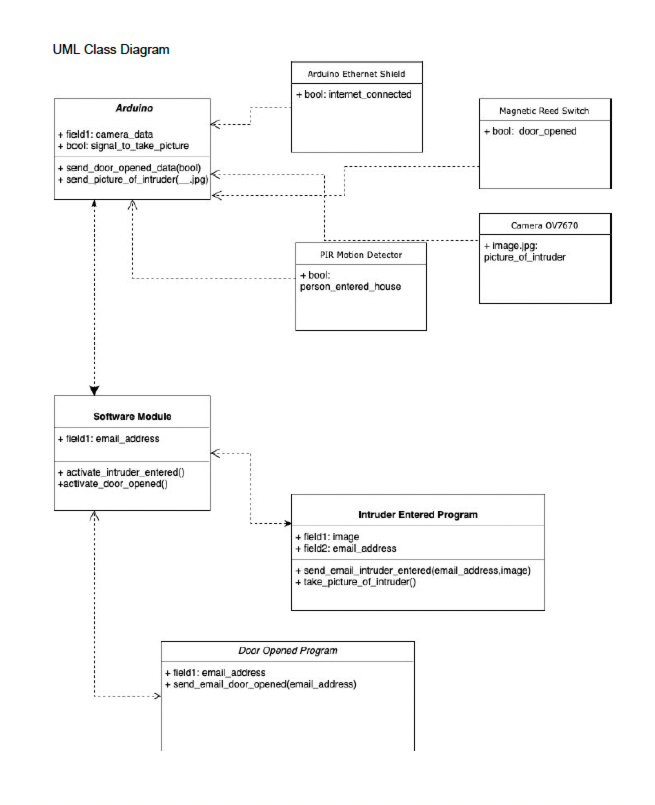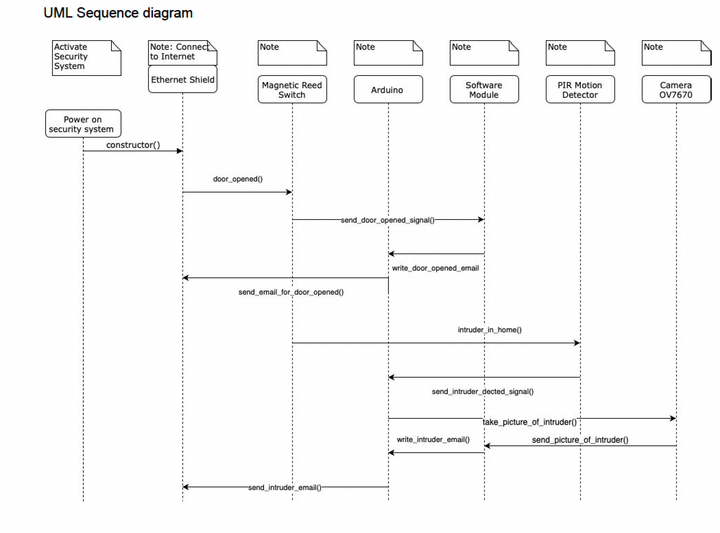Securing the Home Front: A Cybersecurity Approach
In the ever-evolving landscape of cybersecurity, exploring new approaches for safeguarding our homes is crucial. As an SOC analyst armed with a Bachelor's degree in Computer Science and a Sec+ certification, my mission has been to combine my security knowledge with my passion for hardware to create an innovative yet practical home security solution.
The purpose of this post is to share an interesting project I've undertaken, where I created a prototype of a home security system using an Arduino, a reed switch, a motion sensor, and the multifaceted 1Sheeld+. Though it's worth mentioning that the system was not installed on an actual door, but meticulously tested on my desk, its theoretical application holds promise.
The Innovation:
In essence, the security system notifies the user when their door is opened. It does so by sending an email alert. If the intruder enters further, a motion sensor triggers a camera to take a picture of the person. The user then receives a second email, this time with a photo of the intruder attached.
The Design:
For the security system, I utilized an Arduino and several other components. The magnetic reed switch and ultrasonic motion detector form the core of the system, designed to detect any unauthorized entry. I used the 1Sheeld+ to serve as an Arduino Ethernet Shield and Camera Module, transforming my phone into an integral part of the system.
Despite the impressive functionalities, the design has its limitations. First, the 1Sheeld+ necessitates the use of multiple phones, which may not always be feasible. Second, as the system was assembled on a breadboard, components are situated closely together, posing challenges for practical installation. Lastly, given that the setup requires a phone to operate, determining a strategic location to position the device within the home without alarming the intruder is a puzzle.
However, as with any project, there are potential solutions to these challenges. Investing in dedicated components like a proper Ethernet Shield and Camera Module, and incorporating an alarm system, could enhance the system's effectiveness. Furthermore, creatively concealing the phone within the house, perhaps in a bookshelf, could also be an effective workaround.
Standard Practices and Diagrams:
Adhering to established standards, I employed a reed switch, often used in commercial security systems, ensuring a level of reliability in the design. In an effort to visualize the architecture and operation of the security system, I created several diagrams, including a UML use case diagram, architectural block diagram, UML class diagram, and UML sequence diagram. CRC cards were also devised to illustrate the roles of different components in the system.
While the diagrams labeled 'Ethernet Shield' and 'Camera OV7670' denote the original plan, the implementation saw the incorporation of the 1Sheeld+ instead.
Conclusion:
Despite the system's current stage as a prototype tested on my desk, the functionality and potential of the system are evident. A home security system that not only alerts you of an intrusion but also provides a snapshot of the intruder represents an advanced level of protection. As an SOC analyst and Computer Science graduate, I'm excited by the possibilities this project has unveiled and am eager to continue refining the design to overcome its current limitations.
This is just a glimpse of the intriguing blend of cybersecurity and hardware. Through projects like these, we not only build on our technical knowledge but also contribute to the dynamic field of cybersecurity. After all, innovation starts at home. Or, in this case, on a desk



